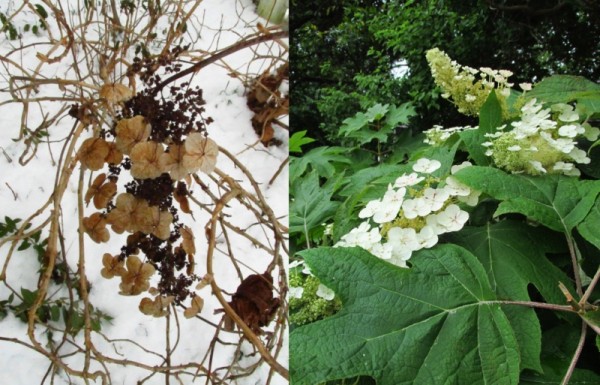 I am not among those who complain about the weather and find it to be a pointless and debilitating dissertation. After many years of working out of doors I have acclimatized my expectations to accommodate the seasons and find pleasure in their cyclical peculiarities.
I am not among those who complain about the weather and find it to be a pointless and debilitating dissertation. After many years of working out of doors I have acclimatized my expectations to accommodate the seasons and find pleasure in their cyclical peculiarities.
For example, this morning I walked out to look at the shrub border and while passing amongst the Hydrangeas could not help but admire the stems of last year’s growth that still stick above the snow in skeletal defiance of winter’s gloom.
There is a stark beauty in their persistence and they provide not only interest for the gardener but sustenance for the birds that frequent the garden.
We grow two Hydrangeas native to North America, the Wild or Smooth Hydrangea (Hydrangea arborescens) and the Oakleaf Hydrangea (Hydrangea quercifolia).
The Smooth Hydrangea is the most common, found from New York to Florida and west to Kansas. It was first described by John Banister who arrived in Virginia in 1678 and explored the local flora until his death by misadventure in 1692. The famous 18th century Virginia botanist, John Clayton, described its growth habit as “dying every year to the ground.”
The Oakleaf Hydrangea was discovered by John Bartram in the mountains of Georgia in 1773. He wrote, “This very singular shrub I have observed growing in great abundance near the banks of Large Rivers in the … West of Georgia.”
Unlike the smooth Hydrangea, its branches persist and, with age, develop attractive exfoliating bark.
The prudent gardener, taking these natural traits into consideration, will cut the Smooth Hydrangea to the ground each spring while sparing the Oakleaf Hydrangea the pruning knife, allowing it to grow unmolested.

Dearest Wesley,
I have never read a more perfect statement than your first paragraph.
I am going to have quote you, as this perfectly describes it for so many of us who have employment at historic sites!
Wishing you and the gardens well in the coming flush of spring. I am planning a trip to the northern colony late in the summer. I hope to find you in the garden at that time!
Fondly,
Dawn